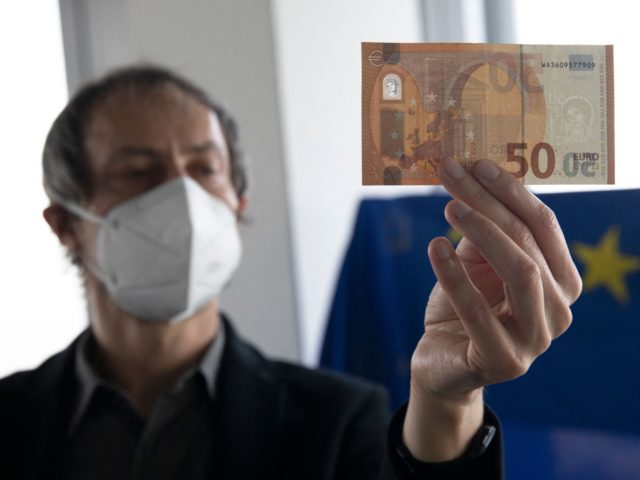The euro — the centralised currency of the European Union — has turned 20 years old on Saturday.
The European Union’s main currency, which is used by 19 of the bloc’s 27 members, has entered its second decade of use on January 1st, 2022. Since its inception, the euro has been the centre of both praise and controversy, with it being lauded as a source for European unity as well as derided as the cause of division.
Commenting on the euro’s 20th anniversary, European Central Bank President Christine Lagarde said that the currency has become a fundamental part of European identity.
“It has helped unite us as Europeans,” Lagarde wrote in the Irish Independent. “In the latest Eurobarometer survey, when asked what the European Union means to them, 41pc of citizens said they think of the euro. Our single currency was second only to freedom of movement.”
“Clearly, Europe and the euro have become inseparable. And for young Europeans, who have only ever known the single currency, it must be almost impossible to imagine Europe without it,” the ECB head continued. “In fact, support for the euro stood at an all-time high in 2021. And according to the latest Eurobarometer survey, our currency now has a 78pc approval rate.”
Austrian Finance Minister Magnus Brunner also praised the currency on the run-up to its birthday, saying that it has been of great benefit to his country.
“The euro is a social, economic and political success story with a historical dimension,” Brunner said, according to Kronen Zeitung. “The introduction of the euro 20 years ago not only brought noticeable improvements for citizens, for example when you think of a vacation in a euro area, but our economy has also benefited over the long term.”
“For the future, we must do everything we can to ensure that the euro continues to be a strong and stable currency,” the finance minister also said.
Eurozone Inflation is Now at The Highest Level Ever https://t.co/JQtwe0z4JO
— Breitbart London (@BreitbartLondon) December 2, 2021
However, while many have praised the uniting force of the single currency, the Euro has also served as a source of division at points throughout its history.
While adopted by many major players within the European Union, the currency never took off in the UK, consistently remaining unpopular right up until Britain left the bloc.
The currency was also cited as a driver for Euroskepticism, with opposition to the currency being an early platform for the UK Independence Party (UKIP).
Economic and social issues have also haunted the currency since its introduction, with the bloc suffering its highest level of inflation since 1997 this year.
While inflation on average for nation’s using the currency was 4.9 per cent, energy costs have increased an average of 27.4 per cent within the bloc.
While the European Centra Bank (ECB) initially tried to play down the inflation issue as being temporary, the central bank’s deputy has since admitted that inflation ” is more persistent and not as temporary” as they initially expected.
Warnings have also emerged regarding an upcoming redesign of euro banknotes, with the original designer of the bills saying that a rework could spark national rivalries.
“The question is whether people have come far enough to accept, for example, famous people being represented,” Austrian note designer Robert Kalina said, according to a report by Irish state-broadcaster RTÉ. “Might it perhaps cause jealousy?”
ECB Deputy: Euro Inflation ‘Not as Temporary As We Expected’https://t.co/JZkIafsid0
— Breitbart London (@BreitbartLondon) December 21, 2021
The currency has also been criticised for its one-size-fits-all nature, with two J.P. Morgan economists, David Mackie and Greg Fuzesi, noting that the ECB has faced a number of serious challenges in the currency’s first 20 years.
“In the first decade, the ECB achieved its objectives, at least in terms of growth and inflation,” CNBC reports the pair as saying. “But beneath the surface, stresses in the euro area were building in the form of large intra-regional financial imbalances driven by excessive leverage in a number of individual countries, Spain, Portugal, Greece and Ireland.”
“For all of the second decade, from 2009-2018, the ECB was dealing with the macro consequences of the unwinding of the imbalances that had built in the first decade,” they continued.
“The obvious failure of the euro is that it’s a seriously incomplete currency union,” said another analyst, Constantine Fraser, from TS Lombard. “It was set up with only some of the institutions that a currency requires.”
“That, and policy mistakes by member states such as the unnecessarily aggressive stance on deficit reduction (and to a lesser extent mistakes by the ECB like the 2011 rate hikes) caused a massive depression in the region,” Fraser continued.
While the currency has managed to survive the challenges of the last decade, Fraser noted that future dangers lie ahead.
“The single biggest and ongoing failure, or problem, or headache in the Eurozone is Italy,” he said. “It cannot grow, it has a creaking economy, it been out-competed by the likes of China and it has an ageing population.”
“If it had its own currency it could (devalue it) and become more competitive but it can’t do that in the euro,” he continued.
Ultimately, Fraser noted that Europeans do not yet feel “‘European’ enough to be happy with large fiscal transfers from one part of the Eurozone to another.”
“The Eurozone is incomplete, it has all these problems and it needs to get deeper, it needs to integrate more. It can’t stand still otherwise it could fall,” the TS Lombard analyst said. “There is the political will to make sure it survives but how fast it can move towards more integration, by making small incremental changes, is unknown.”

COMMENTS
Please let us know if you're having issues with commenting.